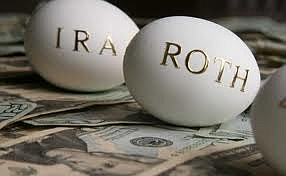Roth IRA + Legacy Trust: A match made in tax-free heaven
February 17, 2014 at 9:31 a.m. | Updated February 17, 2014 at 9:31 a.m.
(courtesy/Northwest Prime Time News)
Most clients like the idea of tax-free growth, tax-free income, and maintaining some level of control over assets after they are passed to future generations. Maximizing Roth IRA growth during a client’s lifetime and leaving the Roth IRA to a “Legacy Trust” at the client’s death provides a one-two punch with incredible long-term benefits.
In recent years, the liberalization of Roth IRA rules has led to big opportunities for long-term tax-favored planning. These changes include, but are not limited to:
Unlimited ability to convert some or all of an accountholder’s pre-tax IRA funds to a post-tax Roth IRA, regardless of the accountholder’s personal income, as long as the accountholder is willing to pay the income tax that results from the conversion
“In-plan” Roth conversions within qualified retirement plans (e.g. 401(k), 403(b), 457), regardless of the plan participant’s age and employment status. That means a participant no longer must be 59 ½ years old or “separated from service” to take advantage of Roth conversions within qualified plans.
Increasingly, savvy clients are creating large pools of assets within Roth IRA accounts, often by executing small Roth conversions each year. In theory, these Roth IRAs would be used during the client’s retirement years as income replacement. However, if instead these Roth IRA accounts are viewed as wealth transfer devices, the tax benefits afforded to these accounts grow exponentially. There are several reasons why this is the case:
Aggressive investment strategy: If the Roth IRA is invested with the pre-planned intention that the account will be for the benefit of the client’s children or grandchildren, the account can be invested with a high-risk / high-return strategy that will, on average, result in greater long-term growth.
Long term growth: If the client can ensure that future generations will not spoil the plan by taking large Roth IRA distributions after the client’s death, tax-free growth (and eventually tax-free income) can be enjoyed for 50+ years. This can be done by naming a Legacy Trust on the Roth IRA’s beneficiary designation form and allowing the trust to restrict distributions to the ultimate beneficiaries after the client’s death. However, the trust must be very carefully drafted to ensure compliance with the complex IRA distribution rules.
A simplified client example can show the power of this concept. Consider two buckets of money, both initially worth $200,000, but one in a taxable brokerage account (i.e. the client’s personal funds) and one in a Roth IRA. Further, assume the following:
The client is 45 years old, has two children that are 15 years old, and the earnings in both accounts are reinvested for the next 50 years.
Both accounts are invested in the exact same manner and grow an average of 8 percent per year (note: in reality, the Roth IRA could be invested more aggressively because current tax consequences are generally not a concern, leading to more investment options and opportunities).
The earnings in the taxable account are subject to an average tax rate of 20 percent, both during the client’s life and in the hands of the client’s children.
The client dies at age 75 (children are 45) and neither account is subject to estate tax because the client’s estate is less than the applicable exclusion from estate tax.
The taxable account passes to the client’s children equally and the Roth IRA passes to a Legacy Trust. The Legacy Trust then pays out “required minimum distributions” to the children.
After 50 years (when the client’s children are 65 years old), the taxable account will have grown to approximately $4.4 million (after taxes), but will have provided no current cash benefit to the client’s children, due to the re-investment of earnings. Of course, in the real world the client’s children likely would have used at least some of the income and/or principal of the account, thereby greatly reducing the account’s value.
The Roth IRA, controlled by the trustee of the Legacy Trust, would have grown to approximately $5 million, but more importantly, the distributions after the client’s death would have resulted in average yearly tax-free income to the client’s childrenof $128,000($2.56 million total). Taking the example one step further, the Roth IRA will continue minimum distributions for 20 more years (from when the children are 65 to 85 years old) and the average yearly tax-free distribution will be more than $350,000. The end result is a very nice supplement to the client’s children’s retirement income, and all under the watchful eye of the Legacy Trust’s trustee.
In summary, although the intended purpose of a retirement account is to replace income during the accountholder’s retirement years, viewing these accounts in such a limited light results in a huge missed opportunity for overall capital accumulation, asset protection, and most importantly, wealth transfer to future generations.
[Warren L. Baker is a member of the Estate Planning Council of Seattle and a tax attorney with Amicus Law Group, PC in Seattle. His areas of practice include retirement plan tax consulting, self-directed IRA compliance, and legacy planning and trusts. He can be reached at warren@amicuslawgroup.com or 206-624-9410.]





